The debate of Beef Ribs vs. Pork Ribs is one that has been raging in the world of BBQ for years. Both are beloved by meat enthusiasts and have loyal fan bases that will argue for hours on end about which one reigns supreme. Beef ribs are thick and meaty, while pork ribs are known for their tender and juicy meat that falls off the bone.
As we delve deeper into this showdown, we'll uncover the rich, smoky flavors of each meat and explore the different cooking techniques used to bring out their unique tastes. Whether you're a bbq guru or a curious rookie, there's no denying that this is a BBQ battle for the ages. So, sit back, grab your favorite BBQ sauce, and get ready for a mouth-watering showdown!
Understanding Beef Ribs
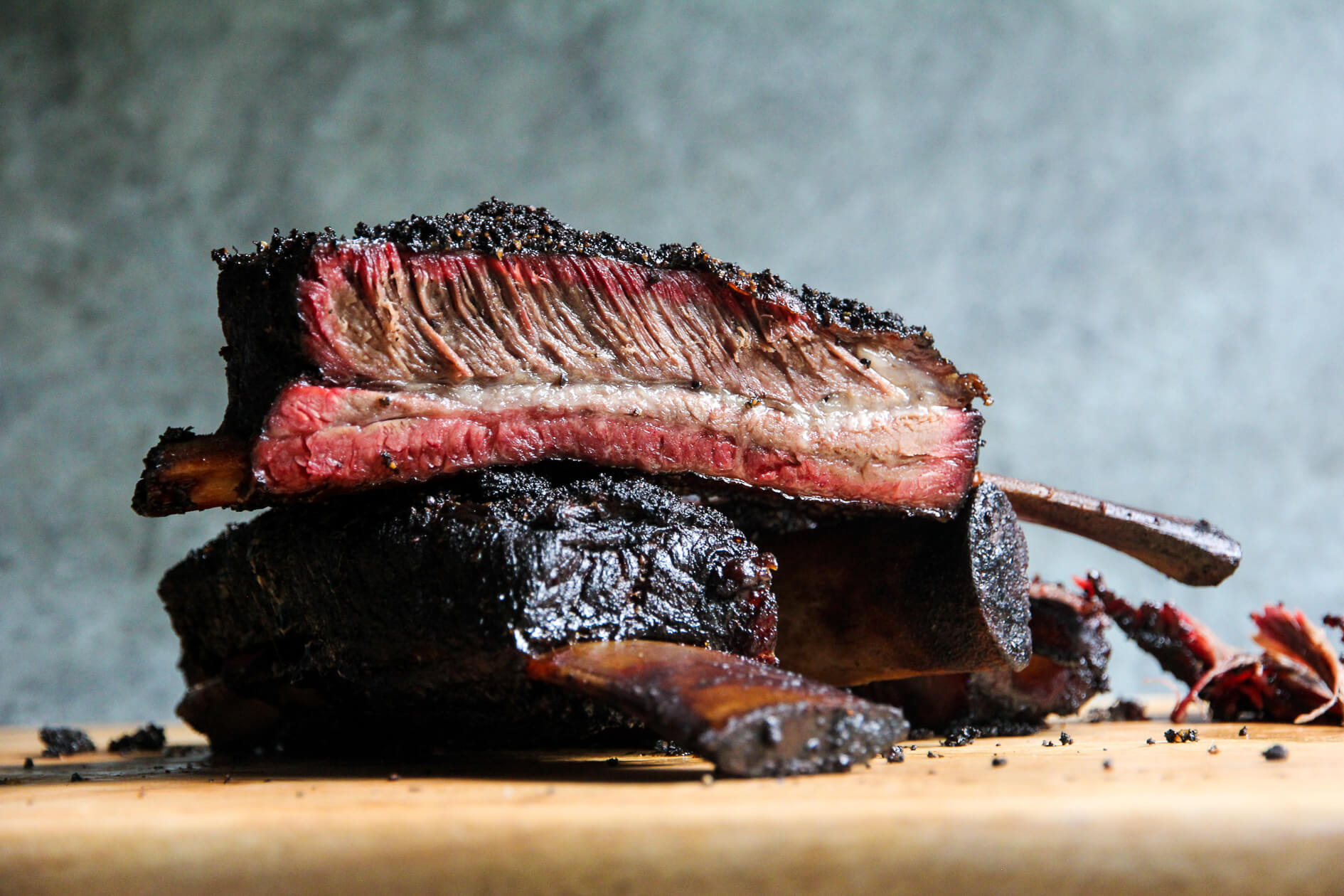
Types of Beef Ribs
Beef ribs are a carnivore's delight, making them ideal for those with big appetites. There are two main types of beef ribs: the short ribs and the back ribs, also known as dinosaur ribs. Short ribs are known for their rich, flavorful meat.
Meanwhile, back ribs are the true spectacle. They are larger and meatier, so be sure to clear a lot of space in your grill or smoker if you plan to cook these beasts! No matter which type of beef ribs you choose, one thing is certain: you're going to have a great meal.
Anatomy and Origin
Let's start with the basics - where they actually come from. Beef short ribs can actually be found in two main areas of the cow, the chuck and the plate (also called dinosaur ribs). The chuck is the shoulder area, while the plate is the belly section.
On the other hand, back ribs are cut from the rib cage area behind the cow's shoulders. Yup, they are as big and impressive as they sound, and their size alone is enough to leave you in awe. These massive cuts of meat are definitely not for the faint of heart.
Characteristics
Beef ribs come in all shapes and sizes, but when it comes to short ribs versus back ribs, there are some distinct differences to consider. For starters, short ribs tend to be smaller, measuring around 3-6 inches long, whereas back ribs are longer and thinner in shape, measuring around 8-12 inches long!
When it comes to flavor, short ribs pack a punch with their higher fat content, giving them a rich and intense taste. On the texture front, short ribs are known for being super juicy and having a tender texture, while back ribs are firmer and chewier.
The cost of short ribs can be steep due to their smaller size and higher demand, but they are well worth the investment for those who appreciate a truly delicious meal. So whether you're a fan of the meaty goodness of short ribs or the leaner taste of back ribs, beef ribs are a goldmine of deliciousness just waiting to be explored.
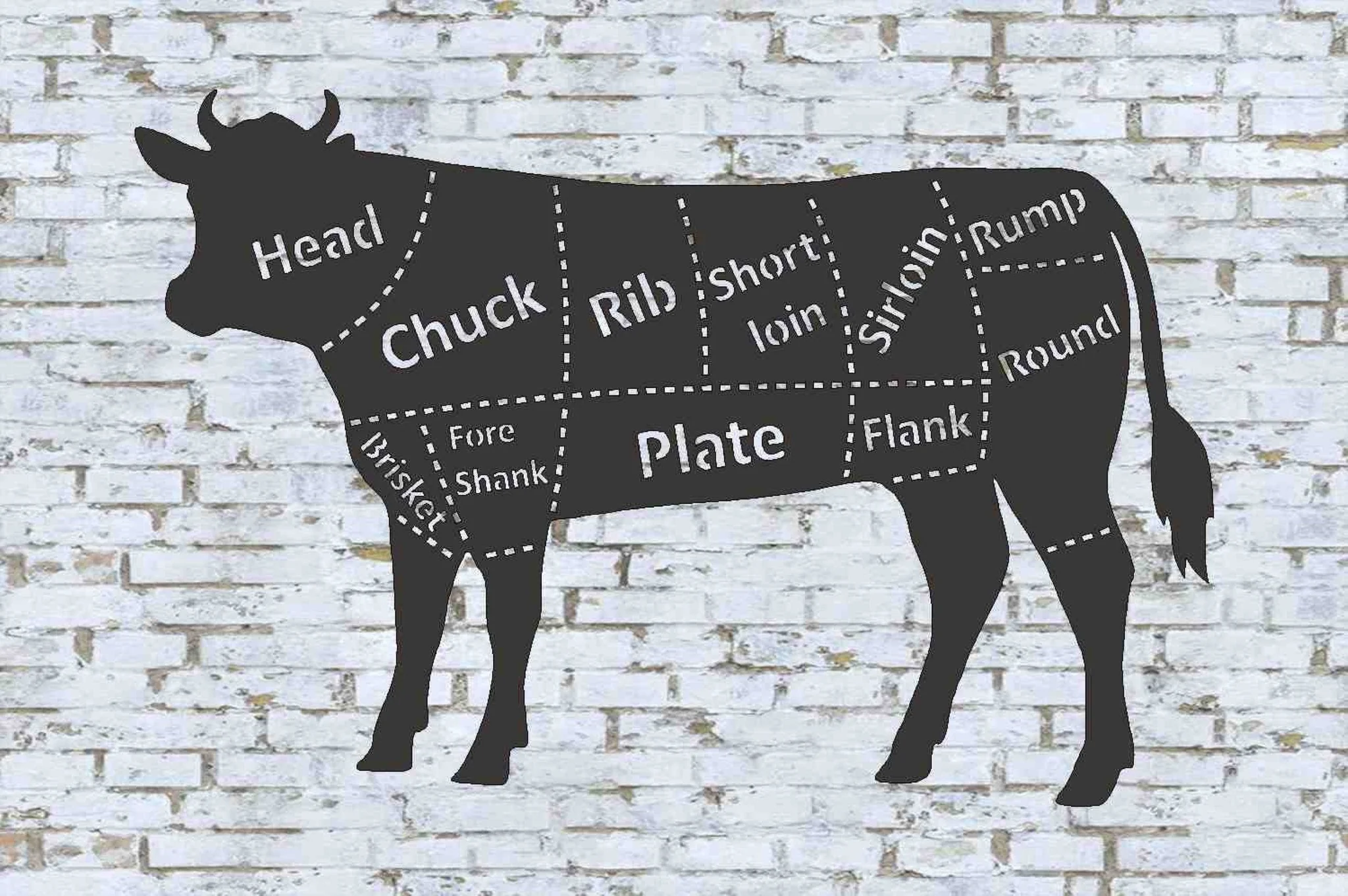
Understanding Pork Ribs
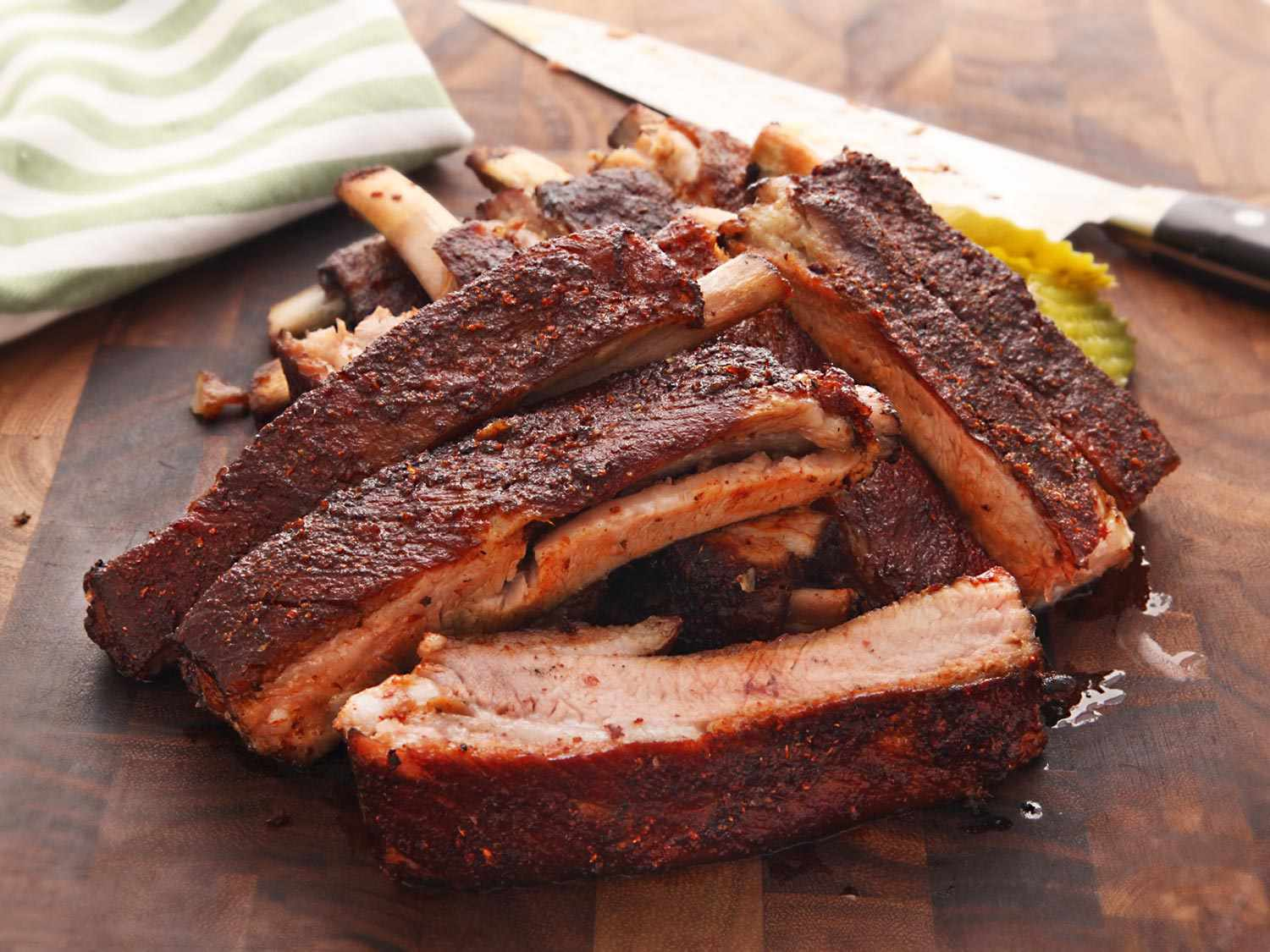
Types of Pork Ribs
Baby back ribs, also known as loin ribs, are a leaner and smaller option, perfect for those who want a lighter cut. On the other hand, if you're looking for something heartier, spare ribs are the way to go. These cuts have more meat and are larger in size.
And if you're in the mood for something more on the appetizer side, riblets or rib tips are always a hit. Whether you're competing in BBQ competitions or hosting a backyard BBQ, understanding the different types of pork ribs is essential. So, fire up that grill, and get ready to dig into some delicious ribs!
Anatomy and Origin
Have you ever wondered why your meat tastes different depending on the cut? Well, as it turns out the amount of connective tissue and muscles in each cut affects everything from texture to flavor. Baby back ribs, for example, are taken from the top of the rib cage and are often more tender and meatier than other cuts.
Spare ribs come from the belly of the pig and have more connective tissue than baby back ribs. Riblets and rib tips, are cuts that come from the spare rib. Knowing where your pork ribs come from is just the beginning of understanding how to cook and enjoy them!
Characteristics of pork ribs - baby back ribs, Spare ribs, riblets and rib tips
When it comes to pork ribs, there are a variety of cuts to choose from, including baby back ribs, spare ribs, riblets, and rib tips. Each cut has its own unique flavors and characteristics.
Baby back ribs, ranging from 3 to 6 inches in length, offer a leaner option, making them ideal for those who are watching their fat intake; however, their popularity might make them a bit pricier. Spare ribs are larger in size, measuring between 6 to 8 inches, offering up more fatty goodness for those who are all about the flavor.
For a bite-sized delight, riblets and rib tips, measuring about 1 to 2 inches, burst with flavor, though they come with a bit more fat and the inclusion of cartilage. When it comes to ribs, it's all about finding the cut that's right for you and your taste buds - So go ahead, try them all!
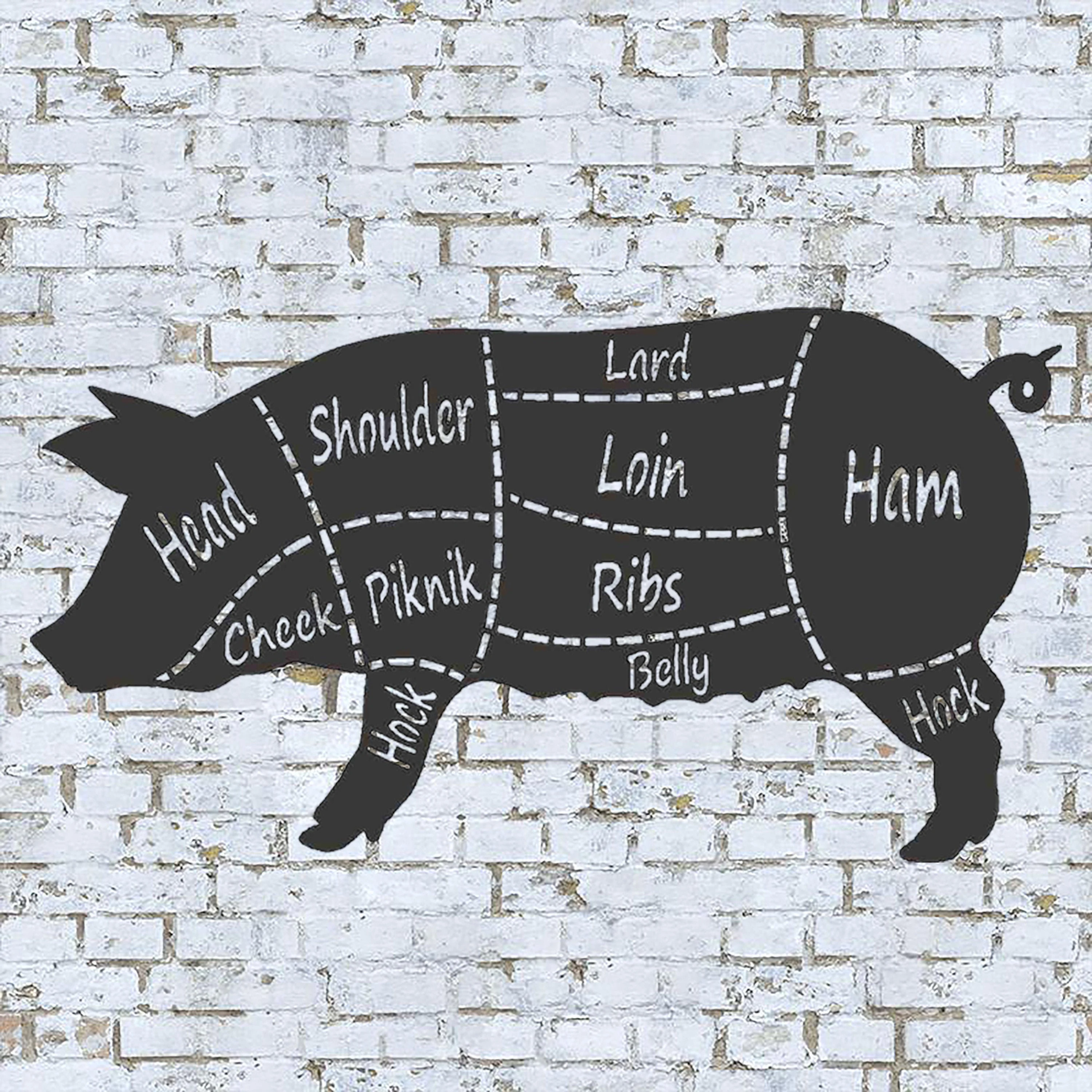
The BBQ Showdown: Key Differences Between Beef & Pork Ribs
If you're a fan of BBQ, then you know the ultimate showdown comes down to beef and pork ribs. These two rivals offer unique attributes that make them contenders for any cookout. Beef ribs give you the awe-inspiring back ribs and juicy short ribs with intense marbling, while pork ribs boast a variety of options like baby back ribs, spare ribs, riblets, and rib tips.
Cooking times vary, and larger meatier back ribs may require more grill space and longer cooking times, in contrast to the quicker cooking times for baby back ribs. When it comes to overall tenderness, it's all about personal preference.
However, cost considerations may come into play, as both beef short ribs and pork baby back ribs tend to be on the pricier side, in contrast to the more budget-friendly options of pork spare ribs and beef back ribs. Choose wisely, but remember, no matter which rib you choose, the end result will always be mouth-watering and delicious.
Personal Considerations in Choosing Between Beef and Pork Ribs
When it comes to choosing between beef and pork ribs, it's all about personal preference. Do you like your meat with a richer, heartier flavor? If so, beef ribs might just be your go-to choice. Or maybe you're more of a fan of the slightly sweeter taste of pork ribs.
Do you like your ribs slow-cooked and falling off the bone, or grilled to perfection in a flash? Of course, budget considerations and time constraints come into play too, but ultimately, the decision comes down to one simple thing: what tickles your taste buds and leaves you feeling satisfied.
Conclusion
Friends and fellow BBQ fanatics, we've made it to the end of our epic Beef Ribs vs. Pork Ribs showdown and what a delicious ride it's been! We've sizzled and seared our way through cuts of every shape and size, from beef short ribs to baby back pork ribs, indulging our taste buds with every succulent bite.
Now it's time to make some tough decisions, weighing up the differences in flavor, cooking times, and cost. Whether you crave the rich and bold taste of beef back ribs or the slightly sweet flavor of pork riblets, the choice is ultimately yours. So fire up the grill and dig in – there’s no wrong answer in this delicious showdown!
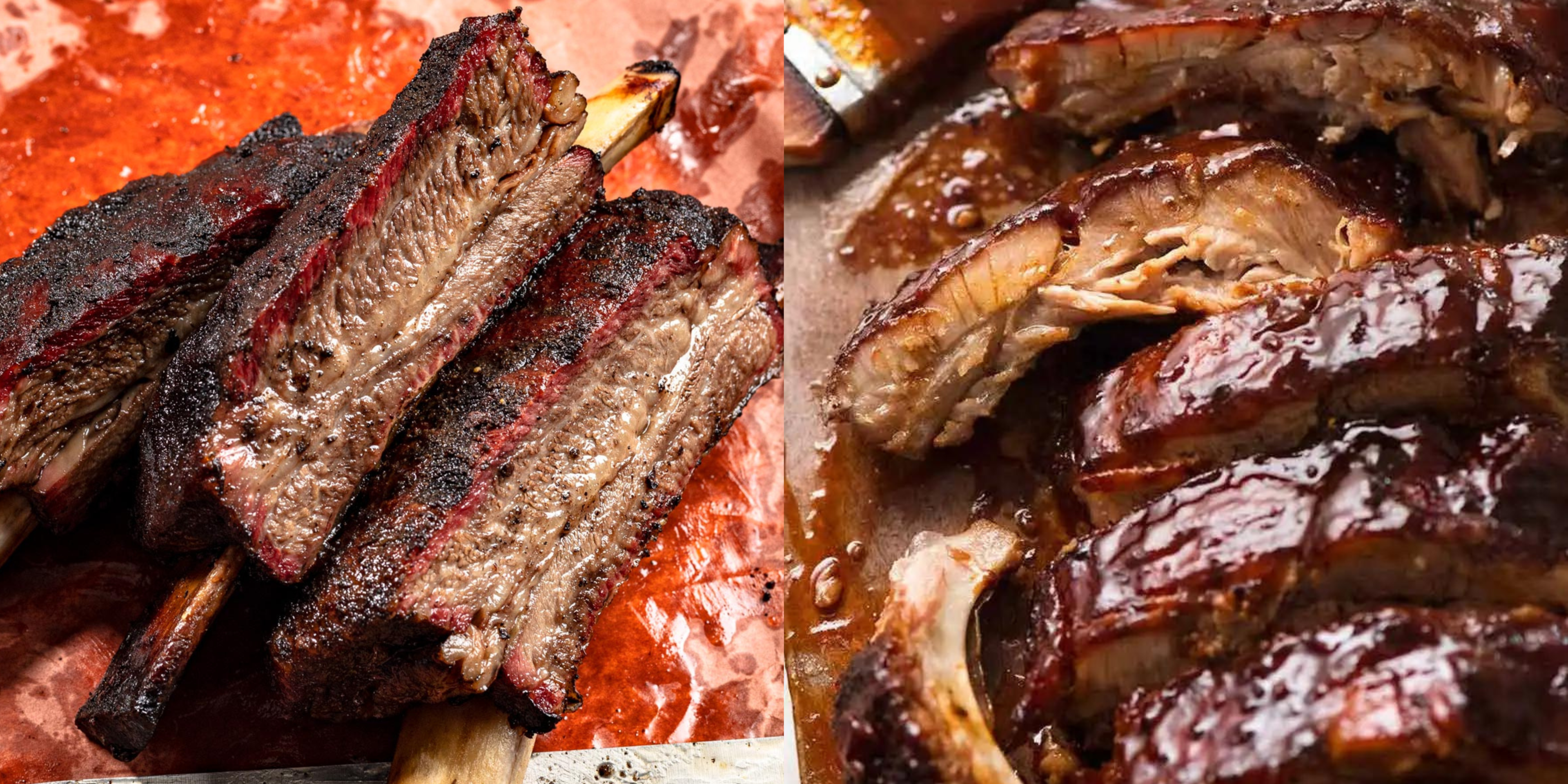
Additional Tips for Cooking Beef and Pork Ribs
When it comes to cooking beef and pork ribs, there are a multitude of ways to make your meat mouth-wateringly delicious. For beef ribs, short ribs, and back ribs, it's all about slow cooking to really let those flavors develop.
When it comes to pork, baby back ribs are a classic crowd-pleaser that can be grilled or smoked for maximum flavor. And for spare ribs, why not try a classic Kansas City or St. Louis-style flavor to really make your meat pop?
Don't be afraid to experiment with different seasonings and sauces to give your meal a personal touch. Visit our retail store Wed-Sat 10 am-6 pm, located at 14696 US Hwy 62, Garfield, AR 72732, or shop DDR BBQ Supply online at https://www.ddrbbqsupply.com for BBQ products and more!

